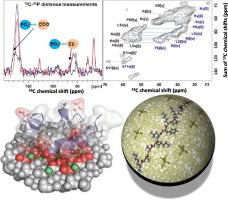Current Opinion in Colloid & Interface Science ( IF 7.9 ) Pub Date : 2018-02-03 , DOI: 10.1016/j.cocis.2018.01.012 Taly Iline-Vul , Nurit Adiram-Filiba , Irina Matlahov , Yasmin Geiger , Meital Abayev , Keren Keinan-Adamsky , Umit Akbey , Hartmut Oschkinat , Gil Goobes

|
Biomaterials are still commonly fabricated using synthetic scaffolds and catalysts such as polymers and surfactants. As contemporary requirements for cleaner and safer biomaterial manufacture rise, there will be a need to generate materials that are more akin to biogenic materials in the hard tissue of organisms. This can be achieved by employing biomolecules derived from organisms themselves. Specialized proteins and peptides, which act as tiny bioengineers in biological processes of mineral formation, can be utilized as biomimetic scaffolds and as reaction catalysts. The use of such molecules rather than synthetic polymers is a promising avenue for generating biodegradable green materials and ensuring the biosafety of medical materials such as dental and bone implants. We review here recent work from the group, on using peptides derived from mineralizing proteins to control the morphology of biomimetic apatite and silica and on characterizing their molecular level interfacial interactions with the inorganic materials formed using contemporary solid-state NMR experiments.
中文翻译:

了解功能肽在使用NMR技术仿生设计磷灰石和二氧化硅纳米材料中的作用
仍然通常使用合成支架和催化剂(例如聚合物和表面活性剂)来制造生物材料。随着当代对更清洁和更安全的生物材料制造的要求的提高,将需要在生物的硬组织中产生更类似于生物材料的材料。这可以通过使用源自生物本身的生物分子来实现。在矿物质形成的生物过程中充当微小生物工程的特殊蛋白质和肽可用作仿生支架和反应催化剂。使用这种分子而不是合成聚合物是产生可生物降解的绿色材料并确保诸如牙科和骨植入物的医疗材料的生物安全性的有前途的途径。我们在这里回顾小组的最新工作,











































 京公网安备 11010802027423号
京公网安备 11010802027423号